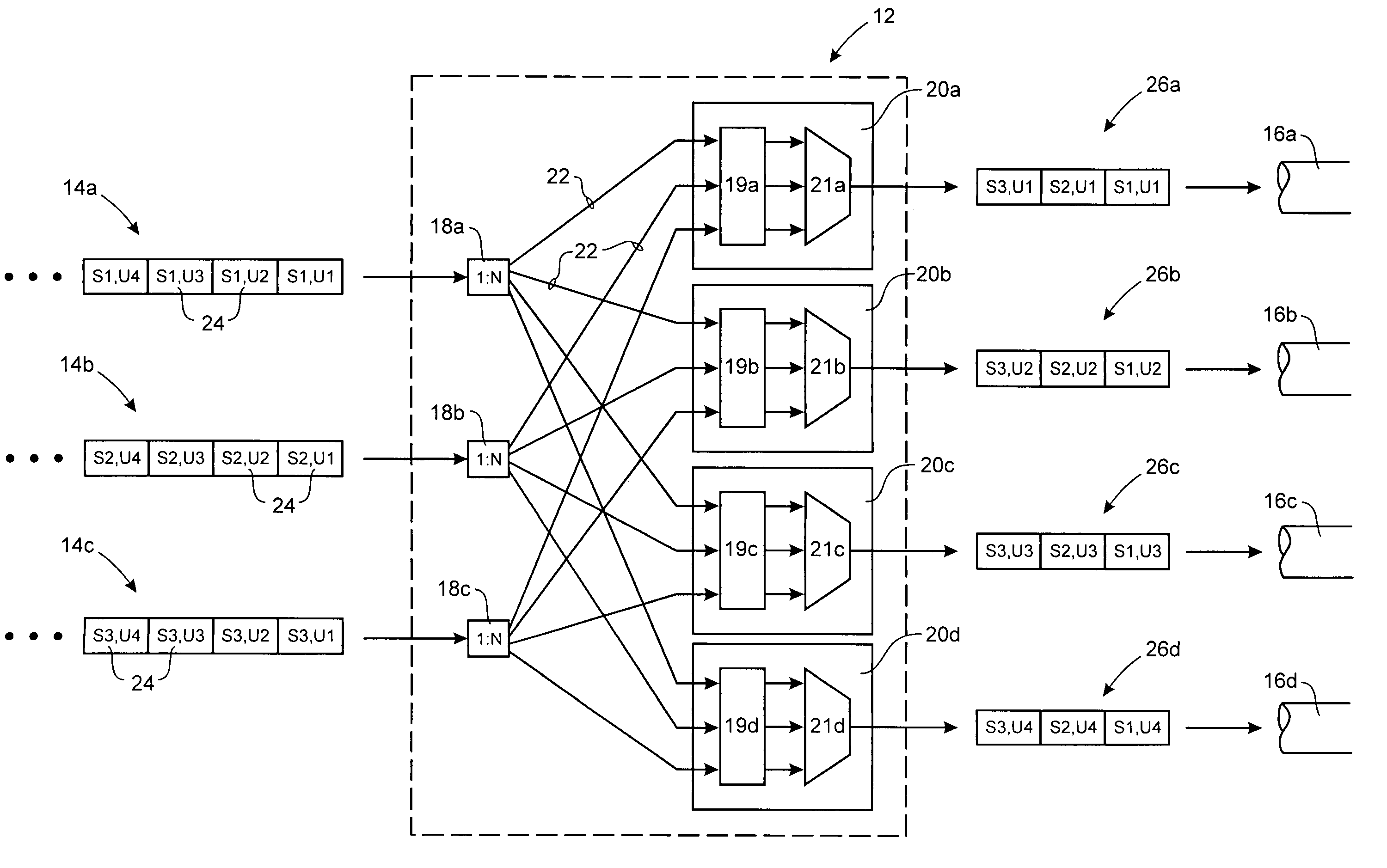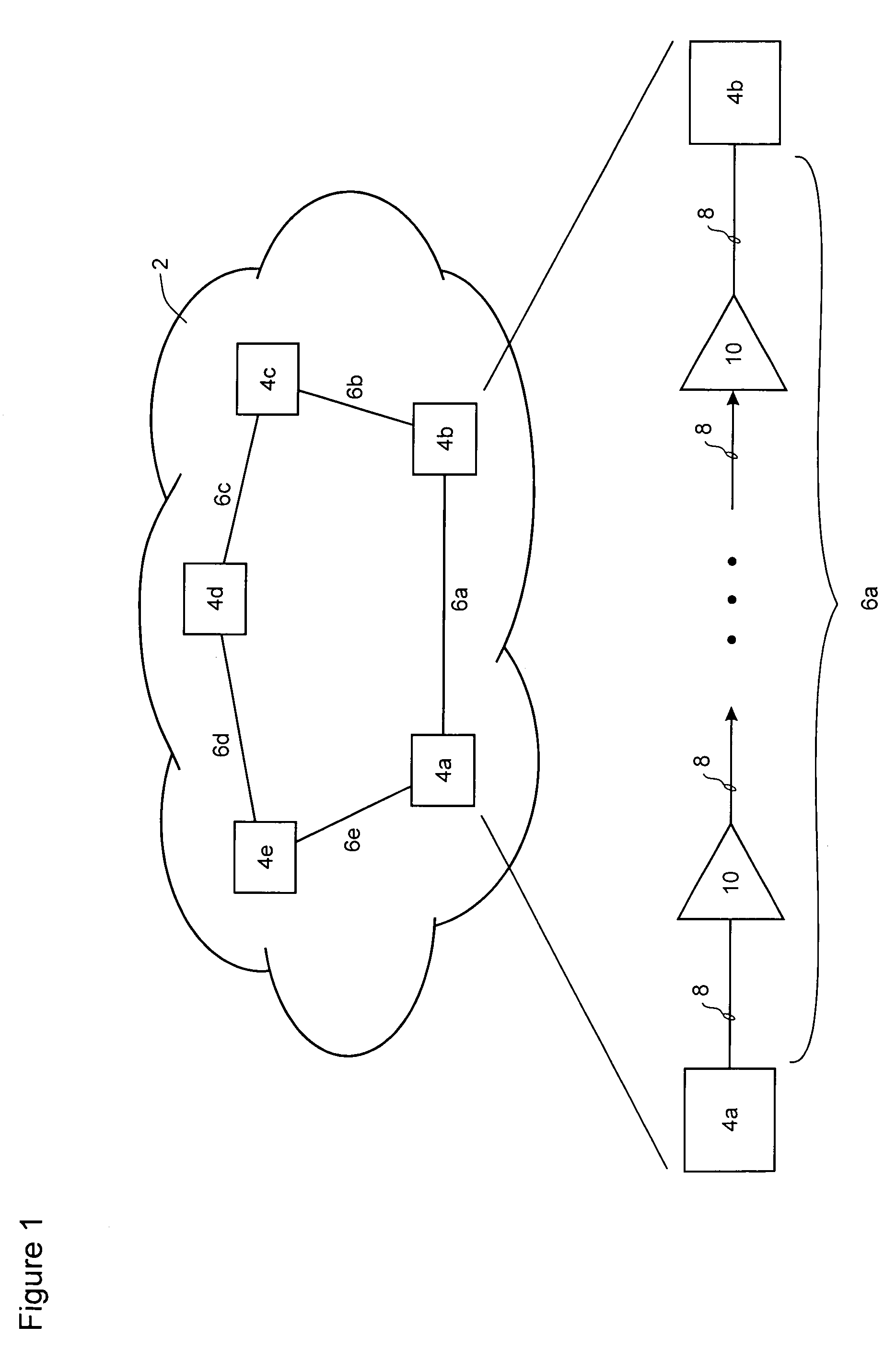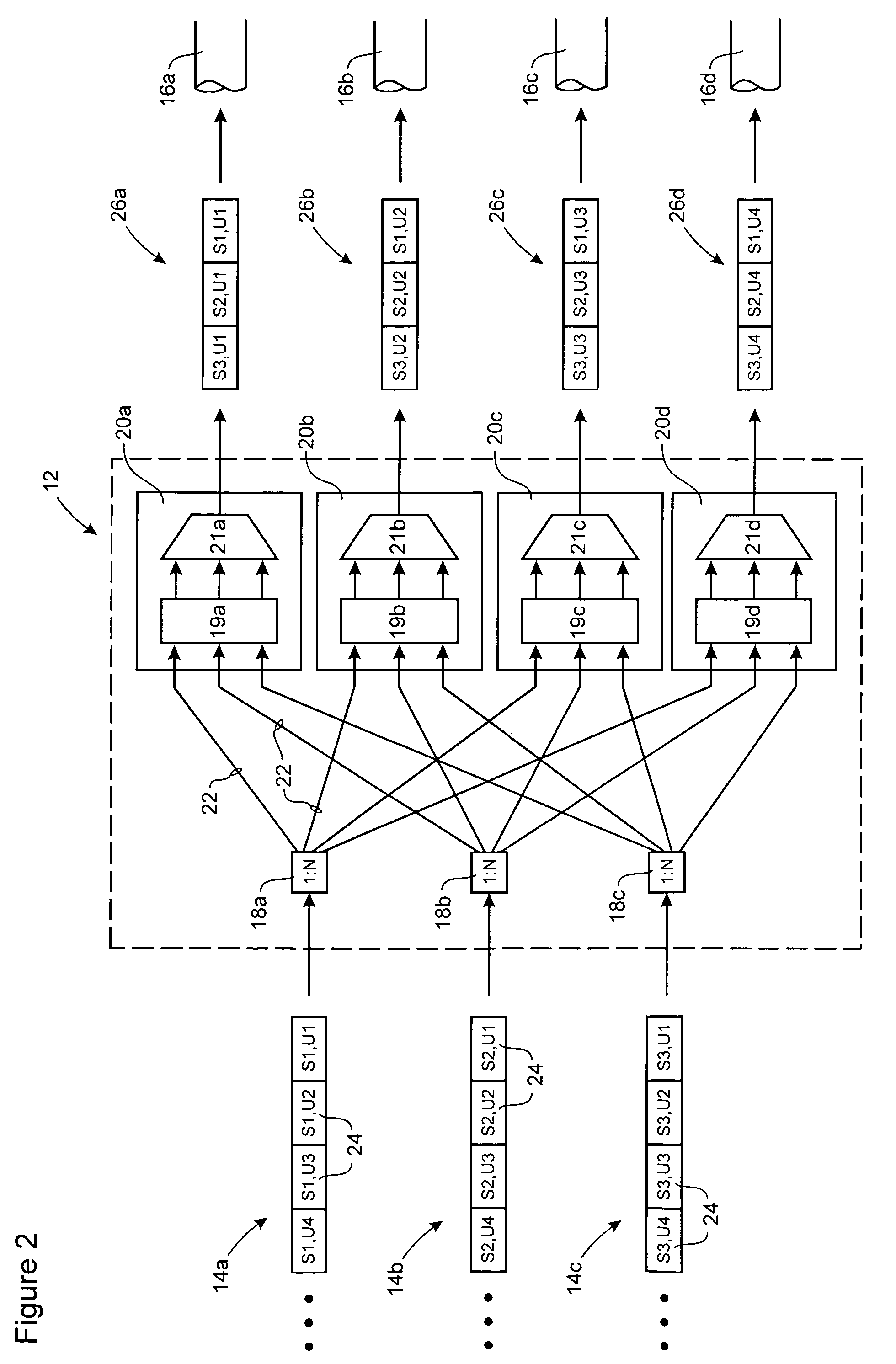Method and apparatus for equalization across plural data channels
- Summary
- Abstract
- Description
- Claims
- Application Information
AI Technical Summary
Benefits of technology
Problems solved by technology
Method used
Image
Examples
Embodiment Construction
[0031]The present invention provides a method and apparatus for optical equalization to improve signal reach by distributing two or more data signals across two or more channels of an optical link. At a receiving end of the optical link, data-streams conveyed through each of the channels are processed to recover the original data signals.
[0032]FIG. 1 is a schematic diagram of a communications network 2 in which the present invention may be deployed. The network 2 includes a plurality of nodes 4a–e (which may be, for example, routers, cross-connects, regenerators or Add-Drop-multiplexors (ADMs)) interconnected by fibre links 6a–e. Each of the nodes 4a–e are preferably electro-optical nodes configured for wave division multiplex (WDM) and / or dense wave division multiplex (DWDM) transport of data traffic. For the purposes of the present invention, optical signals received at a node 4 from a fiber link 6 are assumed to be de-multiplexed and converted to electrical signals for signal reg...
PUM
 Login to View More
Login to View More Abstract
Description
Claims
Application Information
 Login to View More
Login to View More - R&D
- Intellectual Property
- Life Sciences
- Materials
- Tech Scout
- Unparalleled Data Quality
- Higher Quality Content
- 60% Fewer Hallucinations
Browse by: Latest US Patents, China's latest patents, Technical Efficacy Thesaurus, Application Domain, Technology Topic, Popular Technical Reports.
© 2025 PatSnap. All rights reserved.Legal|Privacy policy|Modern Slavery Act Transparency Statement|Sitemap|About US| Contact US: help@patsnap.com



